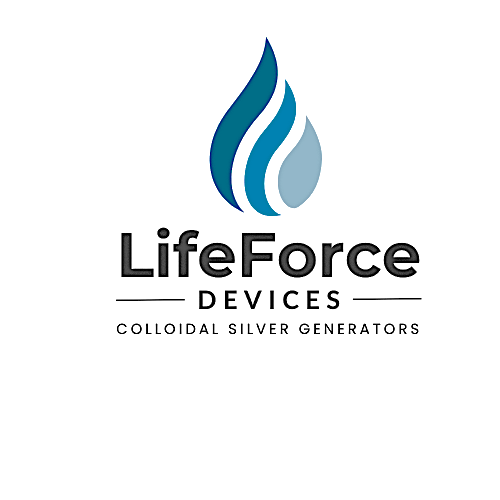 Loading... Please wait...
Loading... Please wait...
Recent Posts
- » The impossibility of silver ions present making colloidal silver with only distilled water and silver wire
- » more information on tds water testers, particle size, using thicker wire gauges
- » why no bubbler and the effect on particle size
- » rust collored stuff on the positive rod and bottom of container
- » more about "nano-particle" machines and particle size range versus all very tiny particles
Categories
- Home
- Educational Blog
- Posted 4/7/2015 - making ionic silver and thinking its colloidal silver
Posted 4/7/2015 - making ionic silver and thinking its colloidal silver
Posted by Michael Gilskey President LifeForce Devices Inc. on 7th Apr 2015
Hello Mike,
Here is a link I recently found on the making of Colloidal Silver. This guy seems quite scientific in his approach to making the colloid. He seems to have some background in electricity and chemistry or both. What I hope you will tell me, is what he is doing sound? He never mentions how much of his Colloidal Silver he takes a day. Here is the link to his YouTube instruction video.
https://www.youtube.com/watch?v=Xur-oP3bmbc&feature
Thanks for taking the time to review this and for your comments on his process.
Thanks.
Ray
Ray, Wow, what a huge effort to produce ionic silver with caramelized sugar in it! What a sad piece of misinformation.
There are three main things he fails to notice or explain:
1) what are those bubbles coming off the negative wire? Those are
hydrogen bubbles, which result from electrolysis (electro = electricity, lysis = to cut, in other words "to cut with electricity"). What is being cut? The water molecules. That is why hydrogen is bubbling off the negative wire and hydroxyl ions are being formed in solution. The chemical equation for this process is 2H₂O
+ 2e⁻ → 2OH⁻ + H₂↑ (two water molecules plus 2 electrons react to form 2 hydroxyl ions plus a diatomic molecule of hydrogen, which bubbles off the negative wire). With the sodium carbonate he has added to the water and the electrolysis reaction taking place, he is making ionic silver in
the form of silver carbonate, which is a soluble ionic silver compound which is
yellow! The yellow color is NOT due to the presence of colloidal silver. See the CRC Handbook of Chemistry
and Physics! The chemical equation is: Na₂CO₃ + 2Ag + 2H₂0 →
2NaOH + Ag₂CO₃ + H₂↑ (sodium carbonate plus two silver atoms plus two water
molecules react to give two sodium hydroxide molecules plus a silver
carbonate molecule plus a molecule of diatomic hydrogen that bubbles off the negative silver wire). Notice that the water molecules are involved in the reaction, because of electrolysis.
2) the Karo syrup (let’s just say it is pure glucose) reacts with the sodium hydroxide
as follows:
NaOH + C₆H₁₂O₆ → NaC₆H₁₁O₆
+ H₂O (sodium hydroxide plus glucose reacts to form sodium gluconate +
water). So again, an ionic compound, sodium gluconate, is being made. In fact glucose is being reduced by the sodium hydroxide already present from the previous reaction that formed silver carbonate! Then the heat causes the excess sugar to partially caramelize and turn
yellow/orange, like "browning" or "caramelizing" onions,
which have the same sugar molecules present when you grill them. The sodium compounds of the sugars are even more prone to caramelizing as well. The conclusion is that Karo syrup is NOT a
reducing agent causing the silver to somehow come out of solution to form
particles of pure metallic silver suspended in water and the resulting yellow color is due to the caramelizing of the sugar and the sodium-sugar compounds.
3) he never applies the Tyndall test (or the Faraday-Tyndall test) to the final
product, by shining a beam of light or a laser through the product to
see if the beam is visible. (He's probably not even aware of the Tyndall Effect). In an ionic solution the beam would be
invisible, because ions are too
small to scatter light in the visible range of the electromagnetic spectrum. On the other hand, by definition, colloids are SUSPENSIONS, not solutions, and
the suspended particles are LARGER than ions, atoms or molecules, so they WILL scatter light in the visible spectrum and the beam of light is visible.
The beam wouldn't be visible unless some of the caramelized sugar has clumped into larger-than-molecule-size particles, which would give a positive indication of a colloid present, but NOT a silver colloid, but a colloid of caramelized sugar particles!
He seems satisfied that because it is a deep yellow that it must be colloidal silver, when in fact colloidal silver can be colorless, yellow, orange, red, or brown depending on the size of the colloidal silver particles present.
Also, colloidal silver has a distinct metallic taste, because it is pure metal nanoparticles larger than ions, atoms or molecules SUSPENDED in water, while ionic silver is positive silver ions DISSOLVED with its associated negative ions, which make it slightly salty to the taste (he has this backwards).
Colloidal silver can only be made correctly with pure silver wires and distilled water with NO additives, because the electrical current will cause the silver to chemically react with the additives and give ionic silver compounds.
Also, if this product is ingested over a period of years, the trace metals in 999 pure silver wire are TEN times greater than the trace metals in 9999 pure silver wire. Isn't it worth the extra cost to reduce those trace metals?
Mike
